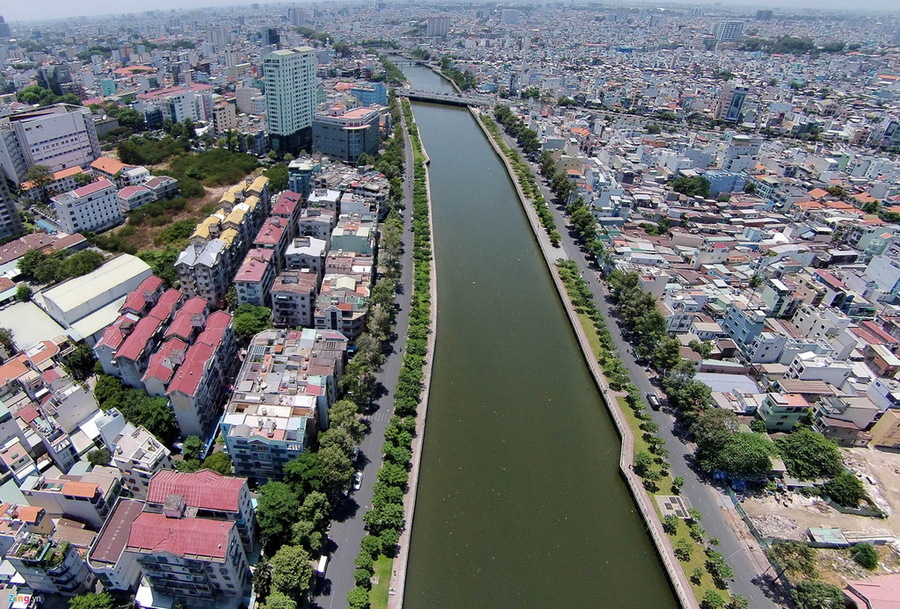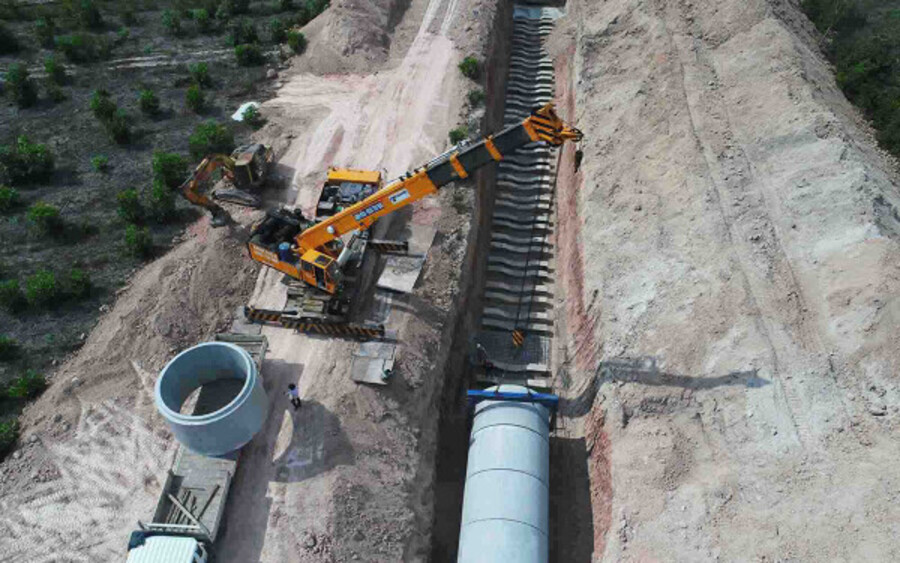In the face of rapid urbanization and increasingly complex climate change, flooding in major cities has become an urgent issue. One of the emerging, sustainable, and environmentally friendly approaches is sustainable urban drainage — a model that leverages natural elements such as vegetation, permeable soil, and surface runoff to manage and reduce flood risks. This model not only helps address flooding but also improves the quality of urban living and strengthens resilience to extreme weather events.
1. Current Urban Drainage Conditions
In many urban areas, drainage systems are still heavily reliant on artificial infrastructure such as sewers, stormwater drains, and canals. However, with the accelerating pace of urbanization and increasing population density, these systems are no longer adequate. Many of them are outdated or poorly maintained, resulting in their inability to handle large volumes of rainwater, leading to severe urban flooding.
Moreover, traditional drainage systems are not typically designed to handle wastewater. Rainwater often carries pollutants from streets and residential areas directly into natural water sources, causing environmental pollution and posing serious health risks — especially in prolonged flooding situations, which provide breeding grounds for diseases.
Uncontrolled urbanization also reduces the amount of permeable land. Overdevelopment and excessive use of concrete prevent the soil from absorbing rainwater, increasing surface runoff and contributing to flash floods. These challenges demand more effective and sustainable solutions for modern cities.

Urban areas today frequently face serious flooding during heavy rains
2. The Importance of Sustainable Urban Drainage
Sustainable drainage brings numerous environmental and societal benefits:
2.1. Minimizing Flooding and Protecting Infrastructure
Sustainable drainage helps control water flow using natural elements such as rain gardens, detention ponds, and green roofs. These systems reduce the burden on existing drainage infrastructure, protect urban assets from water damage, and lower the economic losses caused by floods.
2.2. Improving Environmental Quality
Water and air pollution are major concerns in urban areas. Sustainable drainage filters pollutants from rainwater and reduces air pollution through green infrastructure like rain gardens and urban vegetation. These solutions maintain clean water sources, create healthier living environments, and enhance public well-being.
2.3. Creating Green Spaces
Integrating more greenery into drainage systems helps regulate temperatures and mitigate the urban heat island effect. Green infrastructure not only provides visual and environmental benefits but also supports physical and mental health for urban residents.
2.4. Enhancing Climate Adaptation
With extreme weather events becoming more common, sustainable drainage systems help cities better adapt. Infrastructure like detention ponds and underground storage tanks manage stormwater effectively, reducing flood risks and buffering cities against the impacts of climate change.
3. Đại Nam – Leading in Modern Sustainable Drainage Systems
Sustainable drainage systems (SuDS) combine natural and technological solutions to manage stormwater and urban wastewater efficiently. The primary goals are to reduce flooding, limit water pollution, and improve the urban environment. These systems also relieve pressure on existing infrastructure, enable rainwater reuse, and enhance soil and air quality.
Natural elements like vegetation and permeable soil help absorb and retain rainwater, minimizing surface runoff. Complementary components like detention ponds, green roofs, rain gardens, and underground tanks help regulate flow, protect water sources, and mitigate the impact of extreme weather.
Key Components of a Sustainable Drainage System:
-
Rain Gardens: Specially designed areas that absorb and filter rainwater, reducing runoff and improving water quality.
-
Green Roofs: Roofs covered with vegetation that absorb rainwater, reduce heat, and improve air quality.
-
Detention Ponds: These collect and slowly release rainwater, lowering flood risks in urban areas.
-
Underground Storage Tanks: These temporarily store rainwater for later reuse in irrigation, sanitation, or cooling.
Sustainable drainage systems help reduce flooding and water pollution while enhancing urban resilience
Adopting sustainable drainage is not only a necessary trend in modern urban planning, but also a humane, nature-based solution that contributes to building safer, more adaptive, and long-lasting cities. If you're looking for a trusted provider of wastewater treatment systems and environmental solutions, contact Đại Nam today for expert consultation and support.

